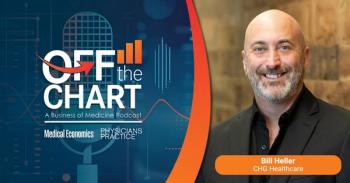
Physician services billed by NPs, PAs draw extra scrutiny from HHS
Medical services that are billed at physician reimbursement levels but are performed by nonphysicians are drawing extra scrutiny from the federal government because they may be vulnerable to overutlization and expose patients to subpar care.
Medical services that are billed at physician reimbursement levels but are performed by nonphysicians are drawing extra scrutiny from the federal government because they may be vulnerable to overutlization and expose patients to subpar care.
HHS plans to review physician billing for "incident-to" services to determine whether these services have higher error rates than other types of services.
In recent years, there's been an increase in the billing of services that are "incident to" a patient's visit to a physician office, and that's part of the reason for the increased scrutiny,
When do "indicent-to" services come into play? One example is for a follow-up visit when a patient is seen by an NP for counseling, after having previously visited with a doctor to obtain a diagnosis. In this scenario, the follow-up visit with the NP would be billed at 100% of the
A 2009 review of "incident to" services by HHS found that 21% of the services that physicians didn't personally perform were performed by "unqualified nonphysicians," which explains the agency's concerns about patients being exposed to subpar care.
The same 2009 review found that when Medicare allowed physicians' billings for more than 24 hours of services in a day, half of the services were not performed by a physician.
So what's the best way for physicians to avoid getting caught up in an HHS review around "incident to" billing? Simply keep in mind that visits billed as "incident to" must meet the following
- Services must be provided in a physician office or clinic.
- A new Medicare patient must have an initial visit with a physician to establish a diagnosis and treatment plan. Then, the patient may be seen by a nonphysician on a follow-up visit.
- The above point also applies to existing Medicare patients who experience new problems. The patient must see a physician first for that new condition.
- A physician must be on-site when the patient visits with the nonphysician.
- The services provided by the nonphysician must be within that individual's scope of practice.
To get weekly news for primary care physicians, subscribe to Medical Economics'
Newsletter
Stay informed and empowered with Medical Economics enewsletter, delivering expert insights, financial strategies, practice management tips and technology trends — tailored for today’s physicians.








